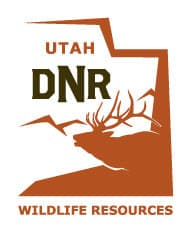Coyotes and Deer Focus of New Study in Utah
OutdoorHub 05.07.12

There’s no question that coyotes kill mule deer, especially fawns.
But just how many fawns do coyotes kill? And how does the killing affect the number of mule deer in Utah?
What about efforts to control coyotes? How effective are those efforts? And how do those efforts help deer in the state?
Biologists with the Division of Wildlife Resources want to know. In cooperation with Brigham Young University and Utah State University, they’re launching a study to find out.
The study begins in June on Monroe Mountain in south-central Utah. If you’d like to help with the study, you can—biologists and university researchers need volunteers.
To learn more about the project and to sign up to help, plan on attending a meeting on May 17 in the auditorium at the Sixth District Courthouse in Richfield.
The May 17 meeting starts at 7 p.m. The courthouse is at 845 E. 300 N.
Here’s how the study this summer will work:
- Doe mule deer will be captured and fitted with radio collars and a vaginal-implant transmitter (VIT) that will be inserted in such a way that it will exit the doe when she gives birth to a fawn.
- When the VIT is expelled, it will begin transmitting, alerting biologists that a fawn has been born and giving them the exact location where the fawn is.
- Immediately, biologists and a volunteer search crew will travel to the area to find the fawn and fit it with an expandable radio collar.
- Once the fawns are fitted with the expandable collars, biologists will monitor them for about six months to see how many fawns survive the first critical months of their lives.
Deer fawns aren’t the only animals that will have radio collars placed on their necks—coyotes will too.
- After collaring the coyotes, biologists and researchers will monitor them to assess the coyotes’ location in relation to deer fawns in the area.
- As part of the study, personnel with USDA-Wildlife Services will also conduct high-intensity coyote control on half of the Monroe management unit. On the other half, no coyote control will happen. Comparing how fawns did on areas where coyotes were controlled versus how they did on areas with no control will help biologists and researchers learn more about the effect coyote control has on the number of fawns that survive.
- Placing collars on coyotes will also allow researchers to estimate the size of the coyote population, how the coyotes use the habitat, the coyotes’ activity patterns and the effect coyote control work has on the coyote population.
The study on Monroe Mountain is just one of several things the DWR and its partners are doing to help mule deer in Utah. In just the past six years, tens of millions of dollars have been spent to help the state’s deer herds:
Restoring deer habitat: At a cost of more than $76 million, the DWR and its partners have improved mule deer habitat on nearly 780,000 acres over the past six years alone. Another 500,000 acres of habitat improvement is in the planning stages. These habitat improvements often take several years before they become established and are fully effective. But, in the future, this effort will result in healthier mule deer populations in Utah.
Reducing highway mortality: Deer-auto collisions kill thousands of deer in Utah annually. No one knows exactly how many are killed, but the DWR is working closely with the Utah Department of Transportation (UDOT) to reduce the number. Since 2005, UDOT has spent more than $47 million to build fences and highway-crossing structures to help both deer and elk cross roads safely. The DWR is also funding two Utah State University projects to learn more about the effect highway mortality is having on Utah’s deer herds.
Stopping deer poachers: The DWR has put additional resources into the capture and prosecution of deer poachers. As a result, several criminals who have killed multiple deer have been arrested. One example of the effect the DWR’s efforts are having is the reduced number of big game animals that were killed illegally during the past two winters, a time when deer are especially vulnerable to poaching.
During the winter of 2010 – 2011, DWR officers know of 72 big game animals that were illegally killed. During the winter of 2011 – 2012, that number dropped to 57.
Limiting the spread of disease: More than $1 million has been spent to research and monitor chronic wasting and other diseases that affect mule deer in Utah.
Monitoring deer on winter range: Winter is the most critical time in a mule deer’s life. Survival is difficult even under the best of circumstances. Each winter, biologists monitor the activity of deer in wintering areas, paying close attention to range conditions, snow depth, the temperature of the air and the body condition of the deer.

